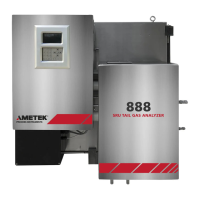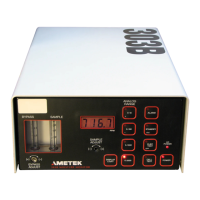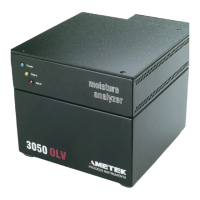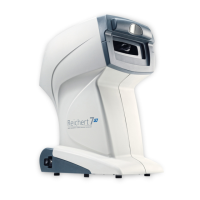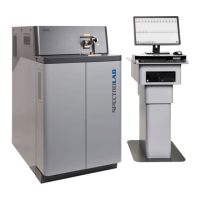6-6 | Model 933S UV Analyzer
Preventing, Detecting, and Locating a Plug in the
Sample System
Preventing a plug in the sample system:
While various factors can contribute to plugs in the sample system, plugs
can be avoided in many cases by:
• Maintaining the ambient temperature around the analyzer, and the
operating temperatures for each analyzer temperature zone.
From the Analyzer Data tab, check the real-time temperature for each
Temperature Zone and compare it to its Setpoint temperature on the
Temperature Control dialog box.
Also, verify the surrounding ambient temperature is at least 5 °C (9 °F)
degrees above the highest expected dewpoint temperature. It is ex-
tremely important to maintain a relatively stable ambient temperature
in the vicinity of the analyzer, with no rapid temperature fluctuations.
• Performing regular maintenance (see “Analyzer Preventive Mainte-
nance Schedule” in this chapter).
• Observing the analyzer response time regularly and taking action im-
mediately if longer response times are noticed (perform maintenance
on components suspected to be restricted or plugged).
Detecting a plug in the sample system:
This is best done by observing the analyzer’s measurement response
time immediately following a Zero. A typical response is in the range of
15–30 seconds. Observe your analyzer regularly to learn what a normal
response time is and keep records of response times after a Zero. Use
the recorded response times as a reference for detecting the formation of
plugs in the sample system (that is, longer response times).
The section of the sample system with the highest risk of plugging is the
sample inlet and the section of the sample inlet most prone to plugging is
the Sample Probe Valve. One way to confirm that a plug is in the sample
inlet is to cap the Vent Line (or, optionally, close the Vent isolation valve)
and Zero the analyzer. Plugs in the sample outlet (or vent side) of the
sample system are rare.
If the Pressure Compensation option is installed, observe the Cell
Pres(sure) reading on the Analyzer Data tab, and if the reading ap-
proaches the Zero gas supply pressure, a plug is present somewhere in
the sample inlet.

